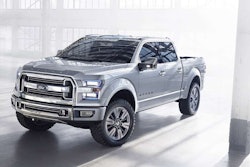In the last two months, development of a 15 liter natural gas engine has taken a kick to the gut.
For one major player in the market – Westport – it was a knockout kick. Westport opted to halt orders for its 15 liter engine in November. In December the company shifted it focus from bringing an engine to market to aligning itself with vertically integrated OEMs as they seek natural gas solutions.
Last week, Cummins hit the mat for the equivalent of a standing-eight count, announcing plans to pause development of its 15 liter engine, which was supposed to enter limited production late this year.
What does Cummins’ decision to at least temporarily exit the large bore natural gas market mean for the segment?
It means exactly what most of us have thought obvious; that infrastructure support has lagged well-behind engine development.
It means long-haul, heavy-haul drivers – the least likely to embrace this kind of technology – are not exactly flocking to it when they can’t be sure they can get fuel hundreds of miles from home along their route.
Cummins says it will re-evaluate its 15 liter plans later this year, giving rise to the theory that its plans are merely on the shelf, not in the trash. However, given the slow wide-spread growth of public CNG and LNG fueling stations, I doubt we’ll see a Cummins 15 liter NatGas engine in 2014 – and I have doubts about 2015.
Simply put, way too much needs to happen to support the engine than can reasonably be expected in the next 6-18 months. There needs to be an LNG/CNG station on every major highway in North America, at a frequency of every 400-600 miles. According to this map, we’re currently a little short of that on a nationwide scale. Since 2009, there has been an 11 percent annual increase in the number of public stations, according to the Drive Natural Gas initiative.
Cummins’ 12 liter NatGas engine has become a popular choice for fleets looking to go green. But many of those fleets have installed dedicated fueling, which removes reliance on an infrastructure they can’t control.
Lack of a clamor for the 15 liter model also likely bodes well for Cummins’ 12 liter engine. The ISX 12 G has a max-horsepower rating of 400 with 1,450 foot pounds of torque. The ISX 15 G was expected to weigh-in with maximum ratings of 450-horsepower and 1,750 foot pounds of torque. I suspect the ISX 12 G is performing at such a high level that the top end of the market isn’t necessarily missing the top-tier torque and horsepower.
This is a classic case of “the chicken and the egg.” Stations won’t be built en masse until trucks are on the road. Trucks won’t hit the road until fleets are sure they can get fuel. And engine manufacturers won’t go all-in on development until they’re sure customers are in the marketplace.
Who will blink first?
Infrastructure will benefit from growth from smaller displacement engines, and that includes pickups, like the F-150, and passenger vehicles. But until that time comes, development of a wide-ranging infrastructure will continue to crawl along and hinder development.













